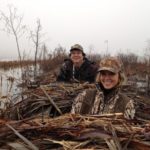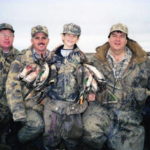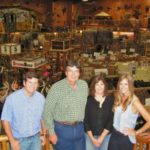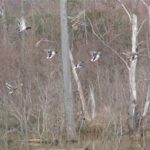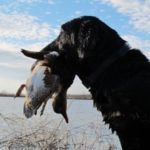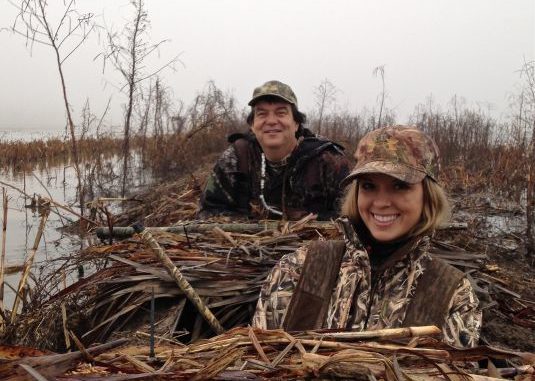
Killing Northeast Louisiana ducks takes more than just gearing up and striking out. This veteran hunter shares his tips for success.
Sometimes it just pays to be right in the place at the right time. That’s definitely the case with duck hunting.
In the right place.
At the right time.
Doing the right things.
OK, those might not all be complete sentences, but they put forth the complete plan for taking ducks, according to Jeff Simmons.
Right place.
Right time.
Right things.
For years, the local Chamber of Commerce used the slogan “There is more in Morehouse” to promote business and industry in the Northeast Louisiana parish. They probably never thought about including duck hunting in that. But then again, they never asked Simmons.
“We are in the middle of some of the finest duck hunting the state of Louisiana and the South right here in Morehouse Parish,” Simmons said. “I’ve duck hunted in a lot of good places, but none better than right here.
“Morehouse is in a key part of the (Mississippi) delta. Ducks come down the Mississippi River all the way from Canada. When they migrate out of Arkansas heading farther south into Louisiana, they gather here because the delta narrows. It’s almost like a waterfowl funnel.”
Part of the “more” in Morehouse includes access to unbelievable duck hunting hotspots like thousands of acres of flooded rice fields around Jones, Mer Rouge and Galion.
There are also thousands of acres of naturally flooded timber, from small 10- to 20-acre spots to 100-acre-or-more cypress ponds and winding sloughs that just scream “land here” to migrating waterfowl.
And even though areas like Wham Brake and the Russell Sage wildlife management areas greentree reservoirs are man-made, they have history on their side.
“Ducks have always come here,” Simmons explained. “They came here way before any of us were even here, much less thinking about duck hunting.
“As long as there have been ducks, they’ve come here. It’s in their genetics.”
Simmons is well qualified to speak on duck hunting. As if owning the 100,000-square-foot Simmons Sporting Goods in nearby Bastrop wasn’t enough, Simmons also hunts ducks almost every day of the season.
And he has for decades.
So how do you take advantage of this duck-hunting mecca?
You can’t just grab up a shotgun, a box of shells and your boots, and head off for successful duck hunting. It takes a little more gear and a little more time, but it’s all worth it.
Here’s how to get to be in the right place. How to be there at the right time. And how to do the right things.
Finding a place to hunt is obviously the first and foremost step in hunting ducks.
Most rice field blinds are leased, but in many cases you can usually find someone willing to share a lease.
Areas like Wham and Russell Sage WMAs are managed for the public by the Louisiana Department of Wildlife and Fisheries.
Wham is almost 5,000 acres, and was once the place to duck hunt in North Louisiana.
Russell Sage is a maze of sloughs, bayous and shallow, flooded acorn flats. In addition, two greentree waterfowl areas provide 2,400 acres of flood-controlled duck habitat that offers excellent opportunity for the public to harvest mallards among the flooded timber.
The best part about hunting at this WMA: It’s easily accessible.
Not far away on the western side of the parish, the Ouachita River backwaters — including Mollicy and the Upper Ouachita National Wildlife Refuge — offer thousands more acres to hunt.
If you aren’t sure how to approach these areas, talk to someone at your local sporting goods store, find another duck hunter who uses the area or visit the wildlife and fisheries office to find out more details. Don’t just show up in the woods and hope for the best.
Once you’ve found a place, listen to what Simmons has to say about not just hunting ducks but killing them.
“There are some basic things I’d tell people who are new to duck hunting or who have been duck hunting but aren’t having the success they think they should,” he said.
The first is to learn from someone who is successful.
“If you have never hunted, you need to get a start with somebody who already knows how,” Simmons said. “Go with them and watch, listen and see what they do. Ask them why they do it.
“You can learn from their experience.”
That’s exactly how he learned. His father didn’t duck hunt, but when Simmons was about 12 he tagged along with neighbors Jim Druhan and his son Jimmy to Zaunbrecher Farms near Jones and had some fantastic hunts.
Jeff was hooked.
“Another thing that everybody puts a lot of emphasis on is the duck call,” he says. “Sure, it is important, but all ducks don’t sound alike —just like all people don’t sound alike.
“You can get help learning to call ducks and find a call you are comfortable with. Heck, there are CDs that you can watch and listen to and learn the basics. I hear guys who sound terrible calling, but they kill ducks every day.”
Simmons feels calling is more about when to call rather than how to call.
For instance, when ducks are flying away, don’t call. Wait till they make a move, then call.
And on still days, lay off that loud call: The still water is like an echo chamber.
Even if you’re the best caller in the world, however, there is one over-arching factor that can cancel out your skills.
“The No. 1 thing is to be where the ducks want to go,” he adds. “It’s harder to run them off when you are where they want to come to. You can’t hardly run them off.
“Likewise, if you are where they don’t want to be, I don’t care if you are Phil Robertson, you won’t get them in there. Not that Phil is any better caller than me. We’ve hunted together through the years. He’s good — just not as good as me.”
Next on Simmons’ list is concealment. Hide your blind and yourself well.
The fact is that if ducks see you they are not coming in. Make sure everybody is hidden. If somebody’s sticking their shining face up out of the blind, ducks are going to see them and you can forget it.
Also, put out enough decoys to attract the ducks, and leave a good opening in the middle of the spread within shooting range to give them a good place to land.
Mixing in moving decoys and something to keep a ripple on the water on calm days can really bring the spread to life.
Also, make sure you get proficient enough with your gun so that when ducks do come into range you have a reasonable chance of shooting it.
That means shooting practice — before the season.
Learn the pattern of the shells and gun you shoot. Simmons said he’s been with guys who couldn’t hit an ostrich if it ran through the decoys because they just picked up the gun and came to the blind.
That won’t work.
Then there is a good hunting dog, like his black lab Boss. While it won’t help you kill ducks, it sure makes it more fun and a lot easier.
“They say a man is lucky if he has one good woman and one good hunting dog,” Simmons said. “I’ve got one good woman, but I’m fortunate to have had about 10 good hunting dogs over the years.”
One final word on duck hunting from Simmons: Think about safety all the time.
He said he hunts with people who have never killed a duck before, as well as people who have shot ducks for 40 years, and sometimes they get so excited that they forget where they are.
“When you are out in steel pit blind with five guys armed with loaded shotguns and somebody starts getting excited, make sure you remind everybody that the No. 1 thing is to be safe,” Simmons said. “Keep your gun on safety until you are aiming to shoot. Don’t shoot over people’s heads. Always know where everybody is.
“Nothing is worth shooting somebody over a dang duck.”
